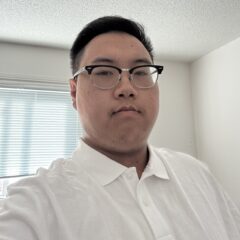I’ve already talked about Blender in a pervious blog, but I didn’t really go into detail. In that blog, I pretty much just gave my opinion. In this blog, I just wanted to expand on that and go through the process of making an object.
Whenever I’m trying to make something, I first get rid of the default cube. More often than not, the object I’m trying to create does not look like a cube. Next, I grab an image of the object I want to create. The best images are the ones that just show one face and are not taken an angle. The reason for this, is that the image will serve as a template and will only appear at certain default angles. You can create an object without a background image, but is a lot harder. For example, I didn’t really want to get an image of a vase. Instead, I just made the vase from my own imagination and in my opinion, it was pretty decent.
After getting an image, I select the best mesh for the object. For the, vase that would be the cylinder mesh. Then I change the amount of faces on the object. Usually the less faces the better. If it looks a little rough, you can just fix it latter. From that point, I scale the object to the relative size of the template. It doesn’t really matter if it’s not the exact size you’re looking for. You can just scale the object back down when you’re done.
Now, you’re at the most time consuming part. By moving around points and adding new ones, you create your object. However, sometimes shaping a mesh won’t be enough. Sometimes you might need to extrude to get the desired shape. An example of extruding, might be the handle of a mug or cup. At this point, it should still look really rough. To fix that, you can add on the subsurface modifier. From what the tutorial guy said, it works by electing the closet three points then smoothing it out. If that’s not enough, you can look up smooth shading and apply it to your object.
With your object finished, you need colour. To create colour in Blender, you use a node system. Basically, you connect a bunch of nodes to create different colour. For example, if you combine red gloss and white mat, you get a mat pink with some gloss. However, Blender has recently changed this system, so I have to relearn how to use the node system.
After adding your colours, you should be 100% done. Now just press render, and then after a bit of patience, your object will be there. Personally, I felt really happy after I created my first even if it was a tutorial. However, that feeling of satisfaction only gets better when you start making you own objects.
